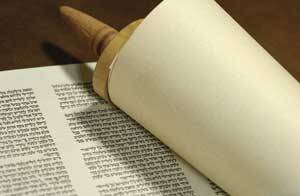Seventy years ago this November, a synagogue was burning in a little German village of Christians and Jews. Many smelled smoke wafting through the windows. Someone heard Mrs. Lowenstein shouting, “Our synagogue is burning. Please, help!” But the street remained silent. The only other voice was a man shouting, “Stay inside and shut the curtains!”
People did as they were told except for a few men from the fire brigade (including two Jews who were members before Nazi times). They ran to put out the fire, but strangers in brown shirts aimed rifles from a truck and said, “No!” Only when the house next to the synagogue started to burn did these “hoodlums from Sulz” (that is what the villagers called them later) give the command to use the water hoses to quell the fire.
The next day the whole village of 1,200 knew that the heart of the Jewish community was destroyed. The fire ruined the synagogue’s beautiful interior: the dark wooden benches for 500, the delicate candelabras hanging over the center aisle, the carved wooden balustrade leading to the women’s section and the ark for the Torah with its sacred scrolls.
All was lost, people thought. And with it, the optimism of those who had believed their non-Jewish neighbors who kept saying that “the crazy house painter from Austria, Hitler, will disappear and things will be as before!”
When my father was born there in 1898, it was a community where “everyone got along”—or so he often told me in Queens, N.Y., where I was born. But good neighbors or not, after this night everyone knew that the Jews must leave 300 years of shared history if they still could. And all over Germany, as synagogues burned on this night, now infamous as Kristallnacht, it was the same message: Get out.
One night, a month or so later, a young Jewish couple in the village heard a knock on their door. They were frightened. They became even more frightened when they opened the door and there was the local policeman. “Don’t be afraid!” he said softly. “I won’t hurt you. I have something to give you.”
The wife backed away, but the husband said, “What is it?”
“A Torah.”
“A what?”
This policeman, it turns out, had seen the Torah lying in the street as the synagogue burned and thought it was not right—a holy book, treated so badly. So he took it home, a heavy thing, and dug a hole for it in his garden. When he heard that the young couple who lived a few houses from his was packing to leave, he hoped they might take the ancient scrolls with them.
The wife suspected a trick, but the husband thought: This man is a good man, a decent man I’ve known all my life! He told him yes, bring the Torah. The next night, another knock, and there was the policeman carrying the sacred scrolls like a giant baby wrapped in a blanket. A day later this Torah, rolled in a living room carpet, was placed in a huge crate that the couple was shipping by boat to Haifa.
I first saw this Torah in 1973, north of Acco near the Mediterranean Sea in Israel. It was in a Memorial Room built by those, including the young couple, who escaped the village in time to start again. On the wall beside the Torah were the names of 87 village Jews who did not make it, who were not rescued by anyone and were murdered in Riga, Theresienstadt and Auschwitz. I bowed my head to honor them, but as I looked up full of anger and sadness, there was the rescued Torah. Its edges were soiled and slightly charred and there was a knife gash; but its Five Books of Moses, saved by one honorable policeman, were open for all to read as before.
Years later, especially on Nov. 9, I see this Torah in my mind and wonder how many like that policeman it would take to rescue human decency—in Baghdad, Darfur, Sarajevo, Gaza, wherever—from the ongoing fires of hate that are consuming it.








